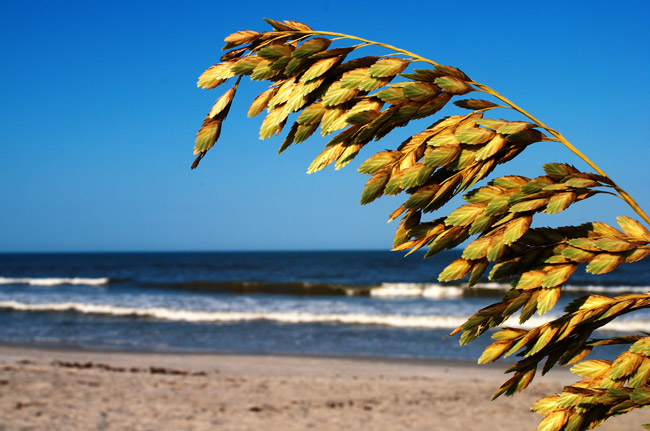
What do two teachers, 30 students, two scientists, one agricultural agent, one town commissioner, and 750 sea oat plants add up to? A perfect example of a community coming together to give nature a hand.
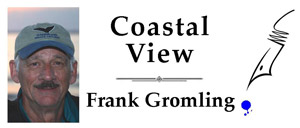 As a Beverly Beach commissioner, one of my responsibilities is to oversee the protection and preservation of the beach and dune system, the town’s single most valuable asset after its residents. So, I was happy to hear Maia McGuire’s inquiry one day in late March. Maia, the University of Florida’s Sea Grant Extension Agent for northeast Florida, and a longtime friend, asked if Beverly Beach would like to be considered for a school project to plant some 750 baby sea oat plants on our dune. Without hesitation (or formal approval by the mayor), I said “Yes!”
As a Beverly Beach commissioner, one of my responsibilities is to oversee the protection and preservation of the beach and dune system, the town’s single most valuable asset after its residents. So, I was happy to hear Maia McGuire’s inquiry one day in late March. Maia, the University of Florida’s Sea Grant Extension Agent for northeast Florida, and a longtime friend, asked if Beverly Beach would like to be considered for a school project to plant some 750 baby sea oat plants on our dune. Without hesitation (or formal approval by the mayor), I said “Yes!”
Maia cautioned that we would be considered along with several other communities, so it wasn’t a done deal. With slightly deflated excitement, I told her I understood but then gave her a trillion reasons (seems like that number keeps coming up these days) why Beverly Beach should be the new home for these homeless babies. Well, a few days later, Maia called to say that the students who had grown the plants had chosen Beverly Beach. I let out a loud “Hallelujah.”
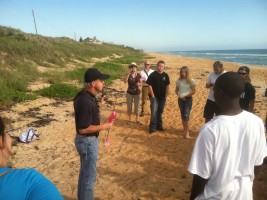
Over the ensuing days I learned that the students were in teacher Wendy Vidor’s Advanced Horticulture class at Matanzas High School and they had been growing the plants since last November. Michael Kane, assistant chair and professor at the University of Florida’s Environmental Horticulture Department, is also the program manager of the Plant Restoration, Conservation and Propagation Biotechnology Program. It was Dr. Kane who grew the baby sea oats from seeds in the university’s laboratory and then entrusted them to Vidor’s class to observe and document their growth, with reports provided back to Kane and a graduate school research project.
Maia also advised that teacher Brian Tuttle’s science class from Flagler County’s Pathways Academy would participate in the sea oat planting, which had now been scheduled for April 30. Brian’s classes had previously worked with Beverly Beach in 2010 (prickly pear cactus and other native vegetation planting) and 2011 (installation of a kiosk describing native vegetation on the dunes), so I looked forward to having them with us again.
At 9 a.m. sharp on April 30, a school bus parked near the designated dune walkover and off-loaded 30 students and teachers Vidor and Tuttle. Minutes later Kane parked behind the bus, and Maia and Mark Warren, Flagler County agricultural extension agent, arrived in a pickup truck, complete with a 55-gallon drum of water and several containers of a special product called Hydrosorb. This product, which absorbs up to 300 times its weight in water, is an excellent way to attract any water in nearby sand to the plant. They are beneficial throughout the growth cycle of plants, but especially in the areas of germination, growth enhancement, and root establishment.
Kane held a brief Q & A with the students assembled on the beach at the foot of the walkover, followed by instructions about how to plant the sea oats. The students and I learned a great deal from this impromptu session.
Weeks before, Maia and I had identified where we wanted the sea oats planted to maximize their benefit to the dune and beach system. The students eagerly organized a process whereby different individuals measured distances between holes, dug the holes to the proper depth, added the Hydrosorb, placed the plants, and covered the plant bases with sand to the right level. In a process I thought would take three hours, the organized students wrapped it up in just two hours, picked up their gear, and headed back to the bus for the return to their schools.
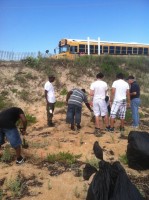
I had opportunity to talk with all of the participants, but really enjoyed time with the students from both schools. Their interest and active participation in the project impressed me, as it always does when I am around students. Having the opportunity to see the results of their months-long research in the classroom being installed in the dune system gave them insights not always available in education. Vidor and Tuttle obviously well understand the value of having students involved within the community, both as a learning experience and an opportunity to integrate with the larger social fabric in which they live.
One of my tasks in this project was to arrange for the initial watering of the plants. While the Hydrosorb would absorb whatever moisture might be in the sand, the plants needed watering to get them started properly. With 750 plants over some 100 linear yards of dune, I wasn’t about to run a garden hose from my home six houses north. With no rain in the immediate weather forecast, I asked the Flagler Beach Fire Department for a huge favor and it came through. At 12:15 on the 30th, a brush truck, typically used to respond to brush and forest fires arrived with two firemen. They carried out the watering in grand style.
During the next couple of weeks, rain added to the moisture the plants needed. They now seem to be doing well. My next task is to secure future watering for weeks when rain fails to fall. While I am unsure from where this support will come, I am confident it will happen. Somehow.
Overall, this was one of my most enjoyable community experiences. Because sea oat roots go down two to three feet in the sand and are resistant to wind and salt, they are an invaluable resource for beach and dune protection. That is one reason they are protected by Florida law (see below).
That’s it for this week. Be well and do a little something in your part of the world to give nature a hand.
![]()
Frank Gromling is the owner of Ocean Publishing in Flagler Beach. Reach him by email here.
![]()
Florida Statute 161.242
Harvesting of sea oats and sea grapes prohibited; possession prima facie evidence of violation.–
(1) The purpose of this section is to protect the beaches and shores of the state from erosion by preserving natural vegetative cover to bind the sand.
(2) It is unlawful for any purpose to cut, harvest, remove, or eradicate any of the grass commonly known as sea oats or Uniola paniculata and Coccolobis uvifera commonly known as sea grapes from any public land or from any private land without consent of the owner of such land or person having lawful possession thereof. Possession of either Uniola paniculata or Coccolobis uvifera by other than the owner of such land shall constitute prima facie evidence of violation of this section. However, licensed, certified nurserymen who grow any of the native plants listed in this section from seeds or by vegetative propagation are specifically permitted to sell these commercially grown plants and shall not be in violation of this section of the law if they do so, as it is the intent of the law to preserve and encourage the growth of these native plants which are rapidly disappearing from the state.
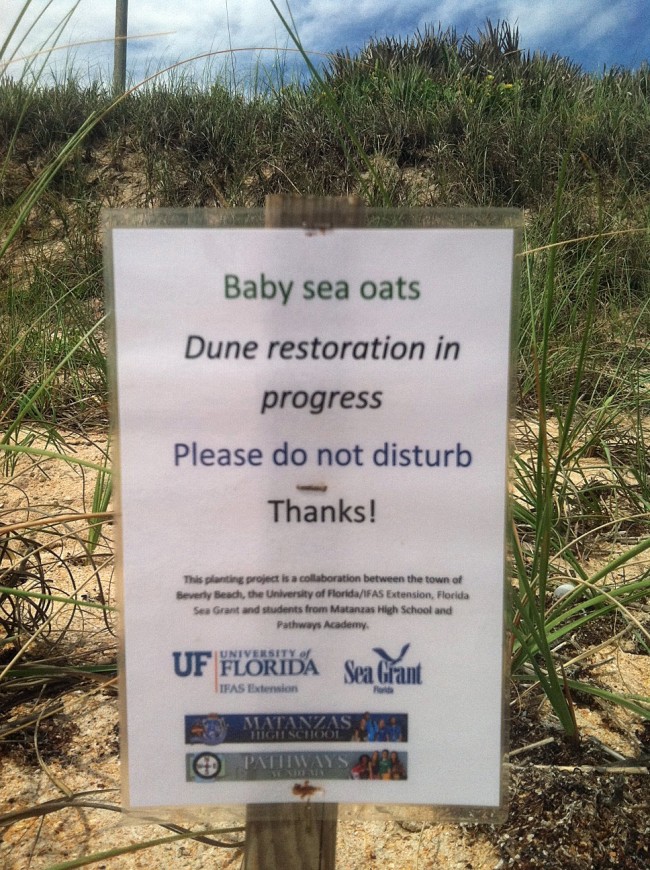





























Whats for dinner says
With the highest unemployment rate in the state, we may have to turn to these oats for consumption. Now plant some crops for the inmates and reduce the Sheriff’s budget! The inmates can do the field work and earn their keep.
Kim says
Great job kiddos and teachers!!
Liana G says
A fantastic project and a wonderful lesson for the students! What better way to teach love of community by taking care of it.